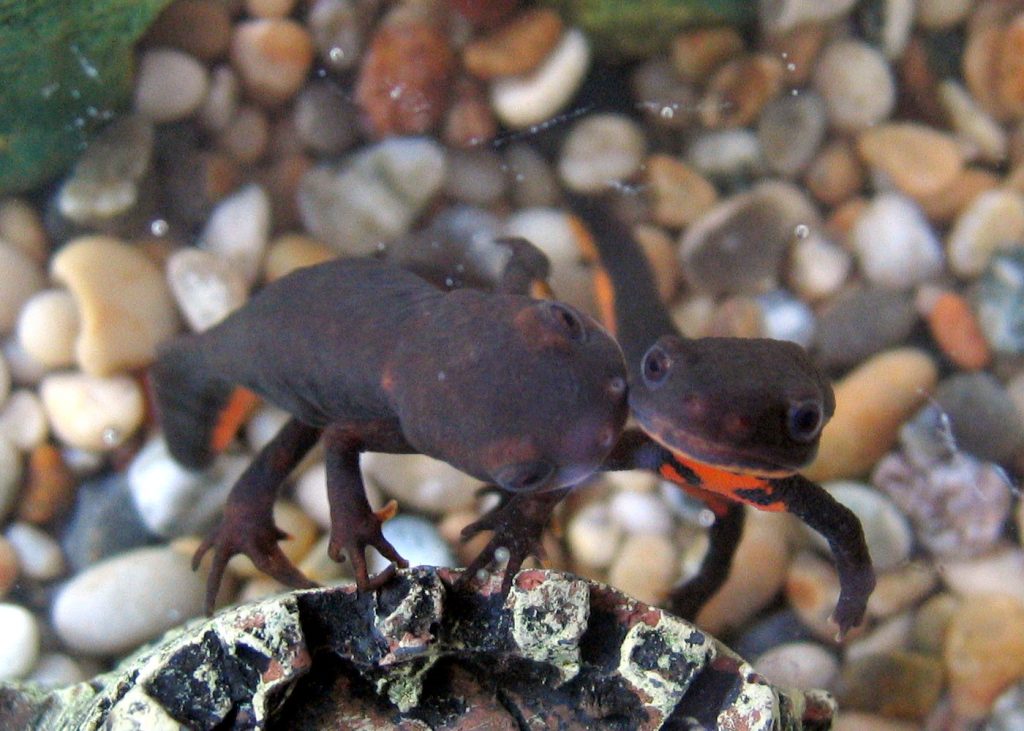 If you have any experience caring for axolotls, then you know that they are very tricky to care for. They require a special form of treatment to ensure that axolotls are well nourished. Giving proper care for axolotls starts during the infancy stage. Read on below to find out how to care for baby axolotls.
If you have any experience caring for axolotls, then you know that they are very tricky to care for. They require a special form of treatment to ensure that axolotls are well nourished. Giving proper care for axolotls starts during the infancy stage. Read on below to find out how to care for baby axolotls.
Disposing of Unwanted Eggs
Axolotls lay multiple eggs at a time – around hundreds. Some owners decide to cull some of these eggs especially if they could not find a suitable home for the eggs. Simply place any unwanted eggs in a container and place them into a freezer. Do this for a few days before disposing of them.
Bringing up the Little Ones!
You must separate the axolotls from its newly hatched babies. If not, the axolotl is going to eat the eggs, like they would anything that is smaller or younger than them. In fact, this is one method used by hobbyists to dispose unwanted eggs – to let them be eaten by the adult axolotl. It is a bit harsh way to dispose of unwanted eggs but easy work for the one raising them.
Living Quarters
After you have decided which of the eggs that had been hatched you would like to raise, put them into individual containers. It is important to note that each egg should be placed on a separate container rather than putting all eggs in one container. After that, you have to wait for the eggs to grow.
By separating the eggs in individual containers, caring for each egg as they grow becomes easier that way. There is no need to change the water often while the axolotls are still in this stage. All you need is a thermometer. This will help monitor and ensure the ideal water temperature for the eggs.
This Egg Looks a Bit Weird
Not all of the eggs that are going to survive and some of them will die even before hatching. You can dispose of any non-surviving eggs by observing if they change shape (characteristic of a healthy egg) or not. Some eggs will look somewhat weird, such as looking cloudy, so make sure to dispose of them quickly. This is a must if you are worried that they could develop fungus and cause disease to spread within the water.
Temperature
 The water condition is a crucial factor that will determine the growth rate of baby axolotls. The axolotl eggs are going to develop faster with higher water temperature whereas their development will be stalled when put in low water temperature. The ideal temperature for the water when raising the axolotl eggs is 15 to 20 degree Celsius. Meanwhile, the eggs will hatch after 21 days but it will vary according to the water temperature wherein the eggs are stored in.
The water condition is a crucial factor that will determine the growth rate of baby axolotls. The axolotl eggs are going to develop faster with higher water temperature whereas their development will be stalled when put in low water temperature. The ideal temperature for the water when raising the axolotl eggs is 15 to 20 degree Celsius. Meanwhile, the eggs will hatch after 21 days but it will vary according to the water temperature wherein the eggs are stored in.
You need to pay extra careful about regulating water temperature. When the water is too hot, it can cause stress on the eggs and even cause death on axolotls. This holds true not just for baby axolotls but for adults too. When the eggs are ready for hatching, you should concern yourself about live food to ensure that the hatched axolotl eggs will have something to eat.
Information on Food
Speaking of food, baby axolotls will not eat their food unless it is 2 cms in size. If you are going to feed them live food, your options include daphnia, or microworms. You must also note that not all baby axolotls are the same. Some might eat some type of food while others don’t. Hence, make sure you have enough variety in food options so they will have something to eat at all times.
As the baby axolotls continue their growth, you can incorporate white worms, bugs and mosquito larvae into their dietary options. If you have your own fish pond, you can scour the pond for food options for your baby axolotls.


 Author and long-time animal lover. Sharing knowledge on pet care through experience and the written word.
Author and long-time animal lover. Sharing knowledge on pet care through experience and the written word.